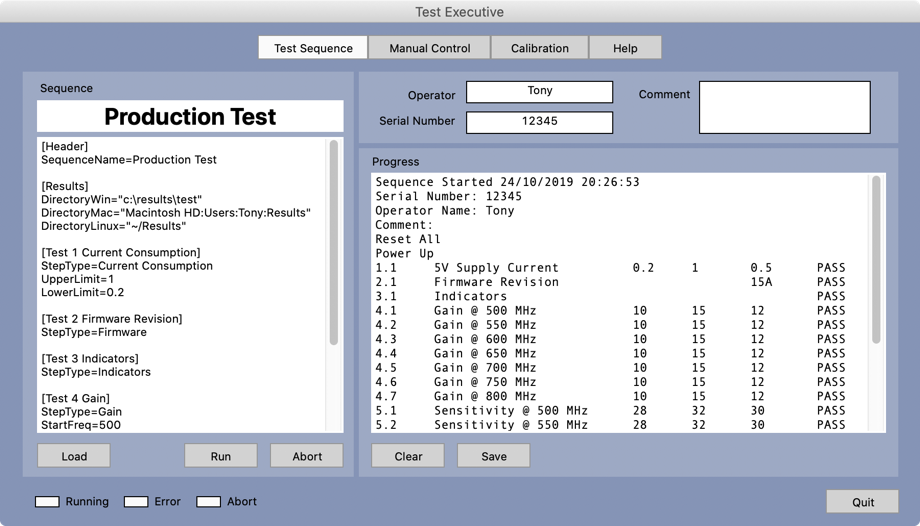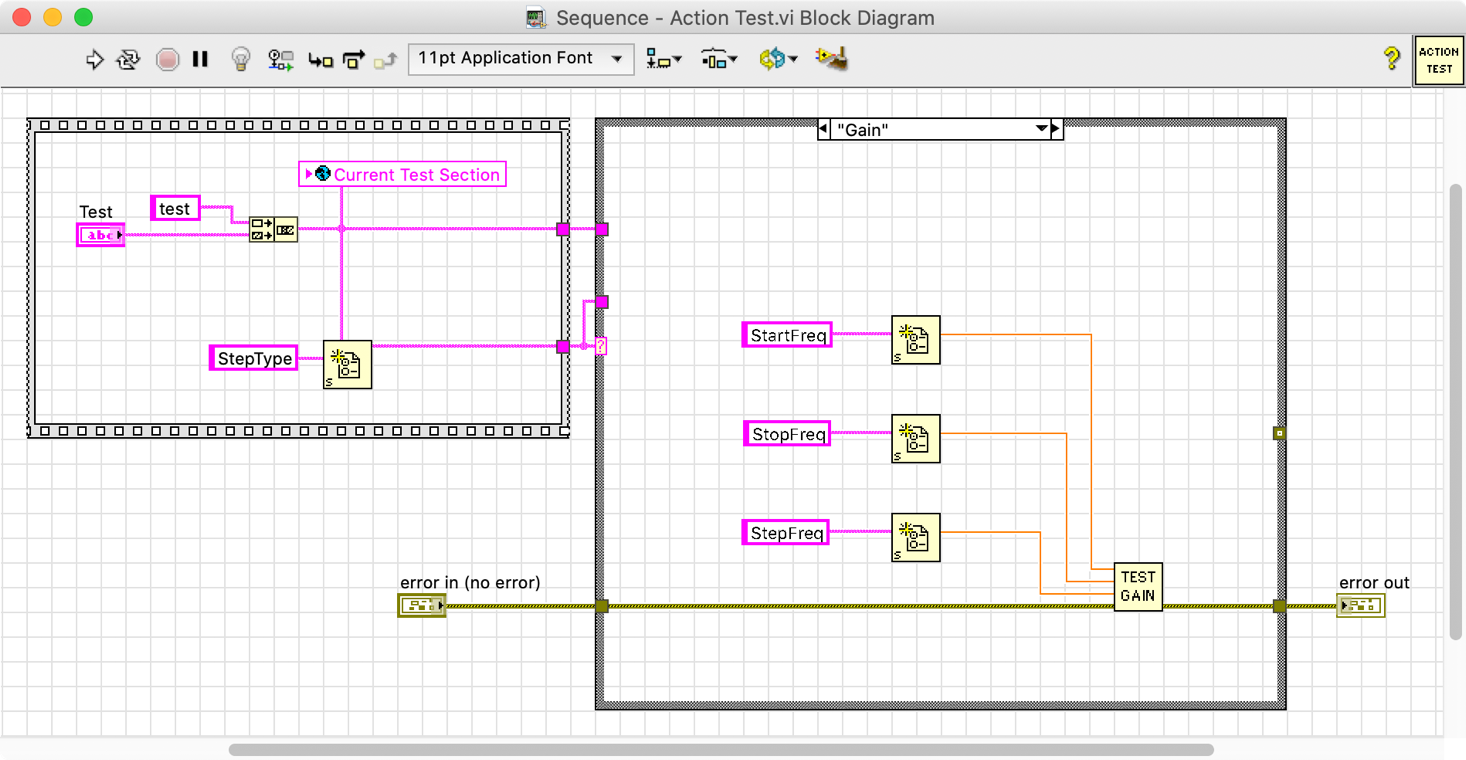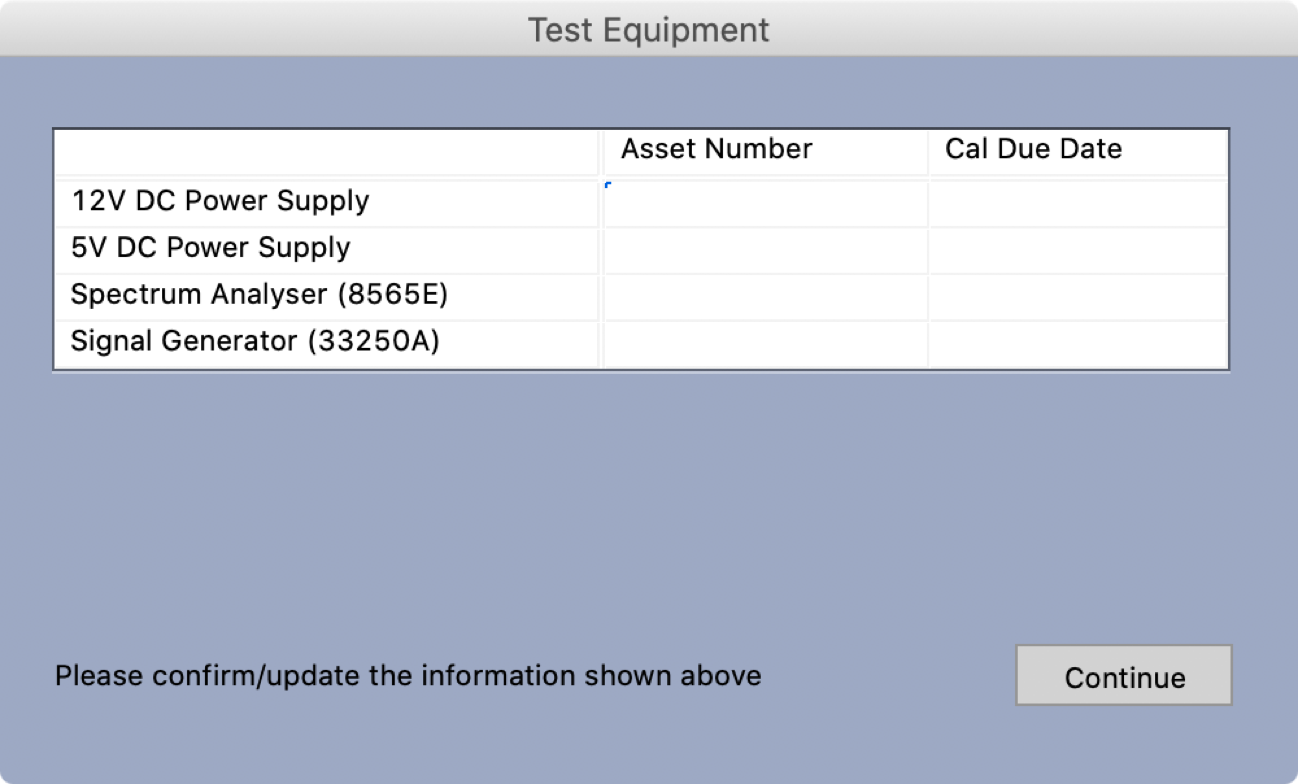APG Consultancy LTD


Mini Test Executive 3
There are many test executives/sequencers available for LabVIEW. The most capable is National Instruments TestStand.
TestStand can be used to used to produce complex test sequences using code written in LabVIEW or other languages or other languages. It is currently available only on the Windows platform.
The Mini Test Executive 2 has been created for people who require a very simple test executive with the following features:

The main change from Mini Test Executive 2 to 3 is the introduction of a newer modern look. Push buttons are now used to switch between the older tabbed interface (the tabs are still there but hidden). All colours have been updated, and flat controls and indicators have been used throughout. The update has allowed the Linux, Mac and Windows versions to look almost identical.
Structure
The following files are used:
Test Executive.vi
Main VI which conists of the user interface for running test sequences.
Test Executive.lvproj
LabVIEW project file
Library - Test Executive.llb
Contains the VIs which are used within the Test Executive
Help.txt
Contains help text which is loaded at startup and displayed in the help tab
Sequence - Action Test.vi
Contains the code for actioning a test, calls tests which are stored in “Sequence - Tests”
Sequence - Check Test
Equipment.vi
Sequence - Power Up.vi
Contains the code for to check that test equipment is connected before each test run
Contains the code to power up the unit under test
Sequence - Power Down.vi
Contains the code to power down the unit under test
Sequence - Reset All.vi
Contains the code to reset all test equipment to its default state
Sequence - Tests.llb
VI Library which holds all of the VIs required for testing
Sequence - Main.seq
Main sequence file which is automatically loaded on startup
Test Sequence
The test sequence is defined in a sequence file, similar to a config/ini file, created using any standard text editor. An example is shown below:
[header]
SequenceName=Main
[results]
directory="C:\Results"
[test 1 Current Consumption]
steptype=Current Consumption
upperlimit=1
lowerlimit=0.2
[test 2 Firmware Revision]
steptype=Firmware
[test 3 Indicators]
steptype=Indicators
[test 4 Gain]
StepType=Gain
StartFreq=500
StopFreq=800
StepFreq=50
The sequence "Sequence - Main.seq" is loaded on startup. The file needs to be placed in the same directory as either the Test Executive VI or the compiled EXE/APP. The operator can load other sequences using the "Load" button.
Sequence - Action Test VI
The "Sequence - Action Test" VI is used to carry out the actually testing. This VI should be edited to contain the test code itself or links to test code. Values from the sequence file can be passed to individual tests using the "Test Executive - Sequence File Value" VI.

Test Equipment Asset Information
Information on the test equipment including Asset numbers and calibration dates can be entered at run time and stored within the results file. The "Sequence - Check Test Equipment" VI should be updated to contain the list of test equipment used by the test sequence.

Test Results
Test results are stored during testing. This allows the current test results to be recovered in the event of a crash and also helps to reduce memory usage. Each test can store any number of results using the "Test Executive - Record Numeric Result", "Test Executive - Record Text Result" or "Test Executive - Record Pass Fail Result" VIs.
The result file name includes the serial number, time and date. The results are stored in comma delimited delimited text. The directory used for storing the results is defined in the sequence file. At the end of testing the file is renamed to include either PASS or FAIL.
Downloads
The latest version of the Mini Test Executive can be downloaded here. The ZIP file contains a complete working executive with example tests designed to demonstrate all the executives functions.
LabVIEW is a trademark of National Instruments Corporation.
Windows is a registered trademark of Microsoft Corporation in the United States and other countries.
Copyright 2022 APG Consultancy LTD
Email: info@apg-consultancy.co.uk